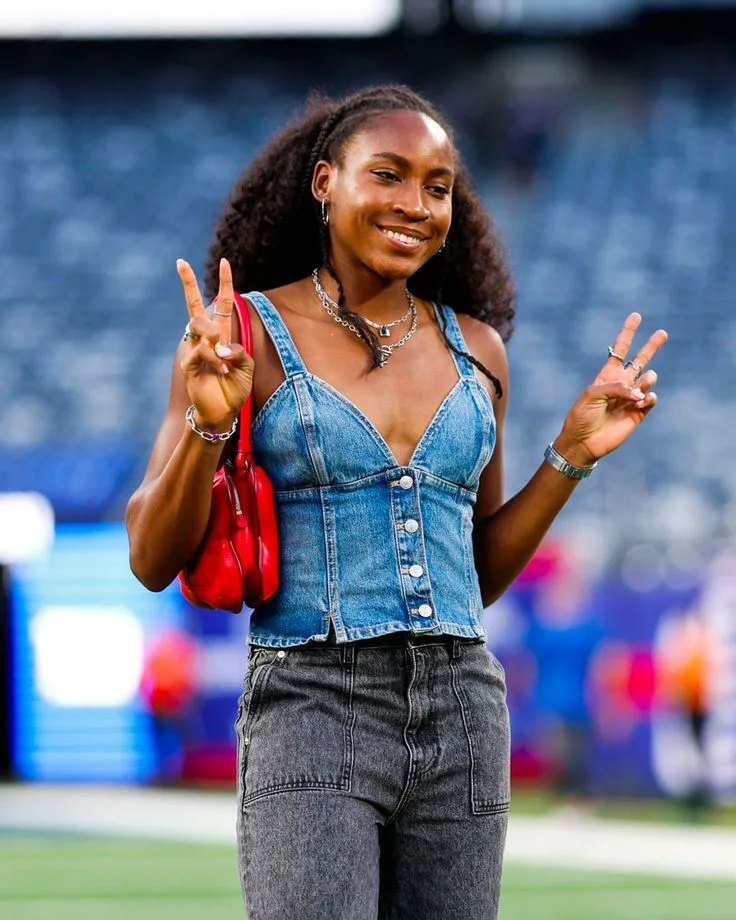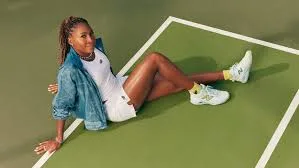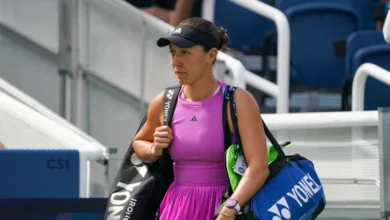Ex-WTA Pro Reveals Coco Gauff and Carlos Alcaraz’s Singles Stardom as She Raises Doubles Marketability Debate

The prominence of singles champions like Coco Gauff and Carlos Alcaraz has reignited discussions about the marketability of doubles tennis. While singles players often bask in the limelight, the doubles circuit frequently operates in the shadows, raising questions about its commercial appeal and visibility.
Coco Gauff’s Meteoric Rise in Singles
Coco Gauff’s ascent in the tennis world has been nothing short of remarkable. At just 19, she clinched her first US Open title in 2023, defeating Belarus’s Aryna Sabalenka. This victory made her the youngest American to win the US Open since Serena Williams in 1999. Such achievements have catapulted Gauff into the upper echelons of tennis, both in rankings and marketability. Her dynamic playing style, coupled with a charismatic personality, has endeared her to fans worldwide. This widespread appeal has attracted major brands, leading to endorsement deals with companies like New Balance, Rolex, Barilla, and Microsoft. In 2022, Forbes recognized her as one of the highest-paid female athletes, with earnings surpassing $11 million.
Carlos Alcaraz: The Spanish Sensation
Carlos Alcaraz, often dubbed the “next Rafael Nadal,” has rapidly made his mark on the ATP tour. His aggressive baseline play and mental fortitude have drawn comparisons to some of the game’s greats. Alcaraz’s rise has been meteoric, with significant tournament victories propelling him into the spotlight. His marketability is evident, as he secured the 29th spot on SportsPro’s 2024 list of most marketable athletes, surpassing seasoned players like Rafael Nadal.
The Doubles Dilemma
Despite the individual successes of players like Gauff and Alcaraz, doubles tennis struggles to capture similar attention. Historically, doubles matches have been sidelined, often played on smaller courts with fewer spectators. This marginalization affects the visibility and marketability of doubles specialists. The general public’s limited recognition of top doubles teams compared to singles champions underscores this disparity.
Marketability Factors in Tennis
Several elements contribute to a player’s marketability:
-
Media Exposure: Singles matches, especially in later tournament stages, receive prime broadcasting slots, ensuring maximum visibility.
-
Endorsements: Brands gravitate toward players with significant public profiles. Singles champions often secure lucrative deals due to their frequent presence in high-stakes matches.
-
Fan Engagement: Players who connect with fans, both on and off the court, build personal brands that transcend the sport. Social media platforms amplify this engagement, allowing players to showcase their personalities and interests.
Gauff’s Perspective on Sponsorships
Coco Gauff has addressed the topic of sponsorships in tennis, highlighting a shift toward greater diversity and inclusion. She noted that brands are increasingly eager to partner with female athletes and individuals from diverse backgrounds. Gauff’s own experiences reflect this trend, as she secured a sponsorship with New Balance at a young age due to the brand’s commitment to diversity. She remarked, “Yes, there’s still a gender gap, but I feel like now a lot of the brands want to get more women and want to be more diverse.”
Challenges Facing Doubles Tennis
The underrepresentation of doubles tennis in mainstream media presents several challenges:
-
Limited Broadcast Coverage: Major networks prioritize singles matches, relegating doubles to lesser-known channels or online streams.
-
Prize Money Disparities: Doubles champions often receive significantly less prize money than their singles counterparts, impacting the financial viability for professional doubles players.
-
Sponsorship Opportunities: With reduced visibility, doubles specialists find it challenging to attract endorsements, limiting their income streams outside of tournament earnings.
Potential Solutions
To elevate the status and marketability of doubles tennis, several strategies could be implemented:
-
Integrated Scheduling: Featuring doubles matches in prime-time slots alongside marquee singles matches can boost viewership and interest.
-
Enhanced Storytelling: Highlighting the narratives of doubles teams, their dynamics, and unique strategies can engage fans and provide deeper insights into the sport.
-
Grassroots Promotion: Encouraging participation in doubles at the amateur level can cultivate appreciation and understanding of the format, leading to increased professional interest.
-
Collaborative Endorsements: Brands could sponsor entire doubles teams, promoting the duo as a cohesive unit and leveraging their combined appeal.
Conclusion
The contrasting marketability between singles stars like Coco Gauff and Carlos Alcaraz and the broader doubles circuit underscores a significant disparity in tennis. Addressing this gap requires concerted efforts from governing bodies, media outlets, sponsors, and players themselves. By implementing strategic changes, the tennis community can elevate the profile of doubles tennis, ensuring that its practitioners receive the recognition and opportunities they deserve.




